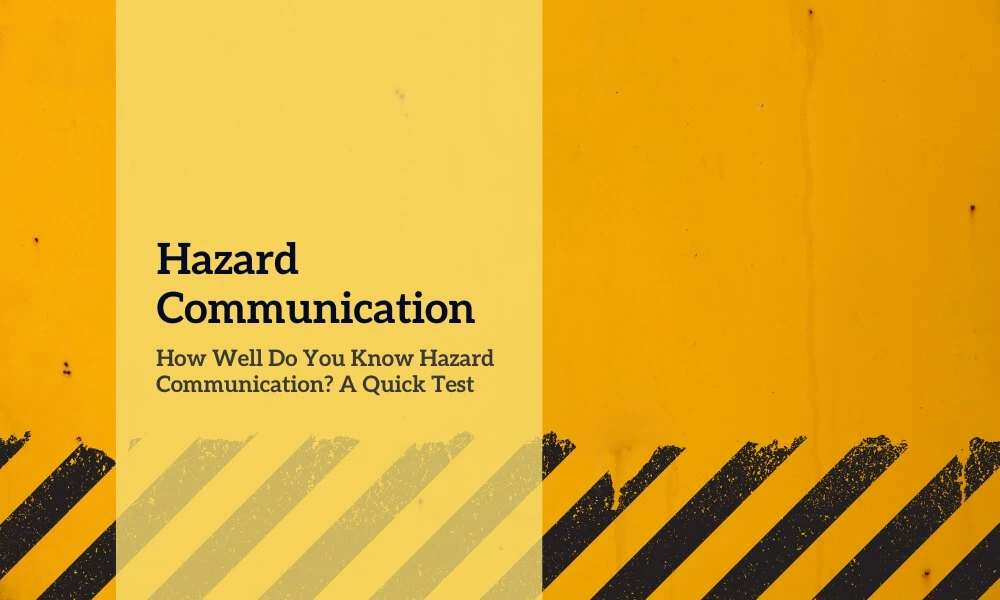As safety professionals, we need to understand the core concepts of hazard communication to prevent injuries and ensure a safe and healthy work environment. This quiz will challenge your understanding of hazard communication standards, safety data sheets (SDSs), hazardous substances, and more.
This short yet comprehensive test will cover common entry routes for hazardous substances, meanings of various pictograms, and safety protocols. Whether you’re a seasoned safety officer, an industrial employee, or a curious learner, this quiz can be a valuable refresher or learning tool.
Are you ready to put your knowledge to the test and learn something new along the way? Let’s get started!
Test Your Hazard Communication Basic Knowledge
What is the most common route of entry for hazardous substances?
Correct!
Wrong!
If you saw a container with a pictogram with a skull and crossbones, what would it mean?
Correct!
Wrong!
If the employer merely intends to evacuate the work area, training should focus on the _____.
Correct!
Wrong!
Advertisement
The Safety Data Sheet (SDS) describes all of the following, except _____.
Correct!
Wrong!
Employers must provide information to employees about hazardous chemicals using each of the following means EXCEPT _____.
Correct!
Wrong!
Hazard communication training must include specific procedures the employer has implemented to protect employees from exposure to hazardous chemicals.
Correct!
Wrong!
Advertisement
All of the following are types of containers described within the HCS 2012 EXCEPT _____.
Correct!
Wrong!
Under the HCS 2012, which of the following is a characteristic of a physical hazard?
Correct!
Wrong!
Under the Hierarchy of Controls, elimination, substitution, and engineering controls are given higher priority because _____.
Correct!
Wrong!
Advertisement
Which of the following is defined as small particles, usually formed when solid metal is heated and vaporized and then condenses as tiny particles?
Correct!
Wrong!
Which SDS section includes the use of personal precautions and protective equipment to prevent the contamination of skin, eyes, and clothing.
Correct!
Wrong!
What is the most common OSHA citation related to the HCS 2012 standard?
Correct!
Wrong!
Advertisement
How soon must manufacturers add new information to an SDS after becoming aware of any significant new information regarding the hazards of a chemical, or ways to protect against the hazards?
Correct!
Wrong!
To be most effective, safety data sheet (SDS) training should _____.
Correct!
Wrong!
Who is responsible for training specific requirements of the company's hazard communication program to temporary employees?
Correct!
Wrong!

